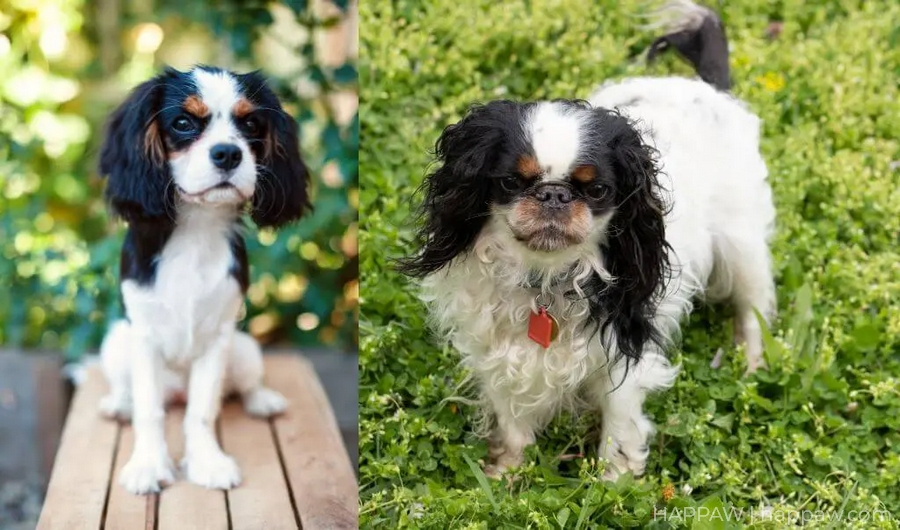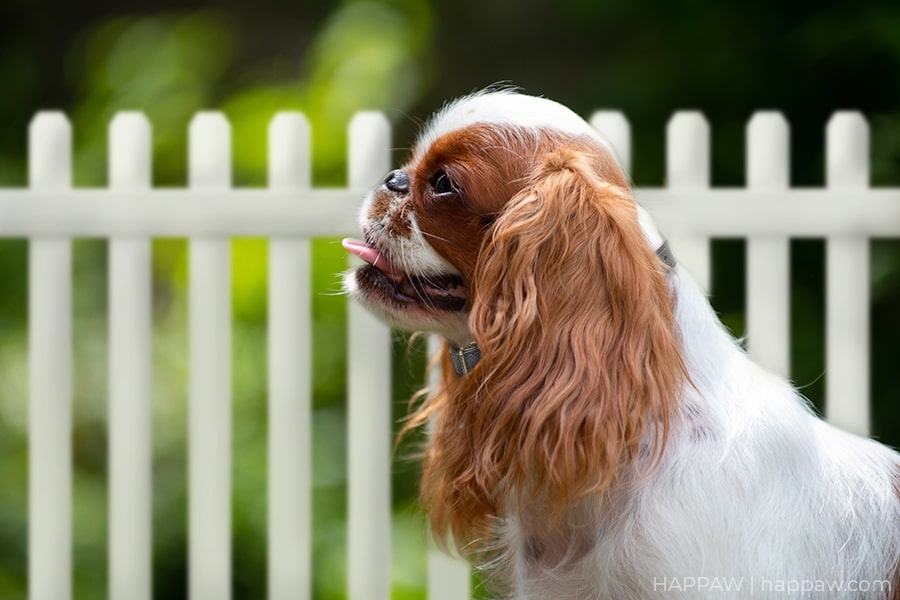In the enchanting world of canine companions, the realm of Spaniels offers us a delightful puzzle: the Cavalier King Charles Spaniel and the King Charles Spaniel. These two breeds, with names so closely intertwined, often leave even seasoned pet enthusiasts perplexed.
Happaw is here to shed light on this delightful enigma.
Background Information
To understand these charming breeds, let’s embark on a historical journey. Both the Cavalier King Charles Spaniel and the King Charles Spaniel share a lineage that traces back centuries. Originally, they were one, united under the banner of the King Charles Spaniel. These toy dogs found favor with British royalty, notably adored by Queen Mary I of Scotland and the namesake himself, King Charles II.

Yet, as time unfolded, subtle variations emerged. By the 16th century, a Spaniel with a longer muzzle, the Cavalier King Charles Spaniel, entered the stage. A pivotal moment in the 1920s reignited the breed’s popularity when a generous American, Roswell Eldridge, offered a reward to British breeders for recreating the original Spaniel look. The result? The Cavalier King Charles Spaniel, a distinct breed with an indomitable spirit.
| Cavalier King Charles Spaniel | King Charles Spaniel | |
|---|---|---|
 Size Size |
8–13 inches tall | 9–11 inches tall |
 Weight Weight |
13–18 pounds | 10–15 pounds |
 Lifespan Lifespan |
9–14 years | 10–16 years |
 Exercise Exercise |
45–65 minutes a day | 40 minutes a day |
 Grooming Needs Grooming Needs |
Moderate | Moderate |
 Family-Friendly Family-Friendly |
Yes | Yes |
 Other Pet-Friendly Other Pet-Friendly |
Often | Often |
 Trainability Trainability |
Intelligent, loyal, eager to please | Intelligent, loyal, eager to please |
Physical Differences
Now, let’s embark on a visual journey to decode their physical differences. The Cavalier King Charles Spaniel boasts a well-rounded physique with a hint of squareness, while its counterpart, the King Charles Spaniel, takes on a more pronounced square shape. These subtleties extend to their head shape, with the Cavalier King Charles Spaniel flaunting a flat head and longer muzzle, and the King Charles Spaniel sporting a distinctive domed head with a flat, upturned nose.

Tails are another tale to tell. While some King Charles Spaniels may sport bobbed tails as a unique breed trait, the Cavalier King Charles Spaniel does not share this feature.
In terms of coat colors, both breeds are intertwined, sharing the same palette. But their fur textures diverge – the Cavalier King Charles Spaniel’s coat is long, silky, and straight, while the King Charles Spaniel’s coat is similarly long and silky but often carries a gentle wave.
You may also like: Why Is My Cavalier King Charles Spaniel So Big?
Coat Colors and Grooming
When it comes to the vibrant tapestry of coat colors, both the Cavalier King Charles Spaniel and the King Charles Spaniel share the same palette. These charming breeds can be found in Blenheim (red and white), Prince Charles (a tricolor with a white basecoat, black patches, and tan markings), and King Charles (black and tan), as well as the enchanting Ruby (red).
However, the true distinction lies in the texture and length of their coats. The Cavalier King Charles Spaniel boasts a luxurious, long, and straight fur, reminiscent of a regal cloak. On the other hand, the King Charles Spaniel’s coat is equally long and silky but often carries a gentle wave, adding to its unique charm.

When it comes to grooming, both breeds demand a fair share of attention. Moderate shedders by nature, expect to find traces of their elegance throughout your home. To manage this, a weekly brushing session with a pin brush or a soft slicker brush can do wonders. These brushes not only help remove loose hair but also provide a soothing massage for their skin.
Visiting a groomer every 4 to 6 weeks is a wise choice to keep their coats tidy and free of mats and tangles. However, one important note: shaving these double-coated breeds is not advisable, as their fur won’t grow back normally, and it also serves as a temperature regulator.
Exercise Requirements
Now, let’s dive into their exercise needs. While both the Cavalier King Charles Spaniel and the King Charles Spaniel are renowned lapdogs, they differ slightly in their energy levels. The Cavalier King Charles Spaniel, with its lively spirit, craves around 45 to 60 minutes of exercise daily. On the other hand, the King Charles Spaniel is content with a slightly lower demand, clocking in at 30 to 45 minutes.

A gentle reminder: these breeds possess brachycephalic features, such as their flat faces, which can lead to breathing difficulties. Exercise should be done cautiously to avoid overheating, especially in hot weather. Short walks and indoor activities can be excellent choices to keep them fit and content.
Suitability for Living Arrangements
For those pondering life in an apartment with one of these delightful companions, you’re in luck. Both the Cavalier King Charles Spaniel and the King Charles Spaniel adapt gracefully to apartment living. Their compact size and relatively low exercise requirements make them ideal urban dwellers.
In terms of potential barking tendencies, it’s worth noting that the Cavalier King Charles Spaniel tends to be a quieter breed, whereas the King Charles Spaniel may be a moderate barker. To maintain harmony with your neighbors, early training to curb excessive barking is advisable.
Temperament and Family-Friendliness
Now, let’s explore the heartwarming temperaments of both the Cavalier King Charles Spaniel and the King Charles Spaniel. These breeds are renowned for their affectionate and loving natures, making them excellent candidates for family companionship.
Their gentle and friendly dispositions are not confined to family members alone; these dogs are often quick to extend their affections to strangers and other pets. This, combined with their cheerful demeanor, makes them perfect additions to households seeking a loving and welcoming presence.

However, their boundless attachment to their human counterparts can also make them vulnerable to separation anxiety. It’s crucial to be mindful of their need for constant company and consider this when planning your daily routines.
When it comes to children, both breeds are generally delightful playmates. Their small size and gentle demeanor make them suitable for family settings. Nonetheless, it’s essential to supervise interactions with younger children, as these toy breeds may not withstand overly rough handling.
Conclusion
In conclusion, we’ve embarked on a journey to unravel the subtle yet significant differences between the Cavalier King Charles Spaniel and the King Charles Spaniel. These delightful breeds, with their shared history and charming qualities, have earned their special place in the hearts of dog lovers worldwide.
As we part ways, remember that both breeds make exceptional companions, each with its own unique traits and characteristics. The choice between them ultimately depends on your lifestyle, preferences, and the level of energy and companionship you seek in a furry friend.
Whether you find yourself drawn to the lively spirit of the Cavalier King Charles Spaniel or the quieter charm of the King Charles Spaniel, both breeds offer unwavering love and devotion to those who welcome them into their homes. So, before making your decision, take a moment to reflect on your own life and what you desire in a canine companion.
